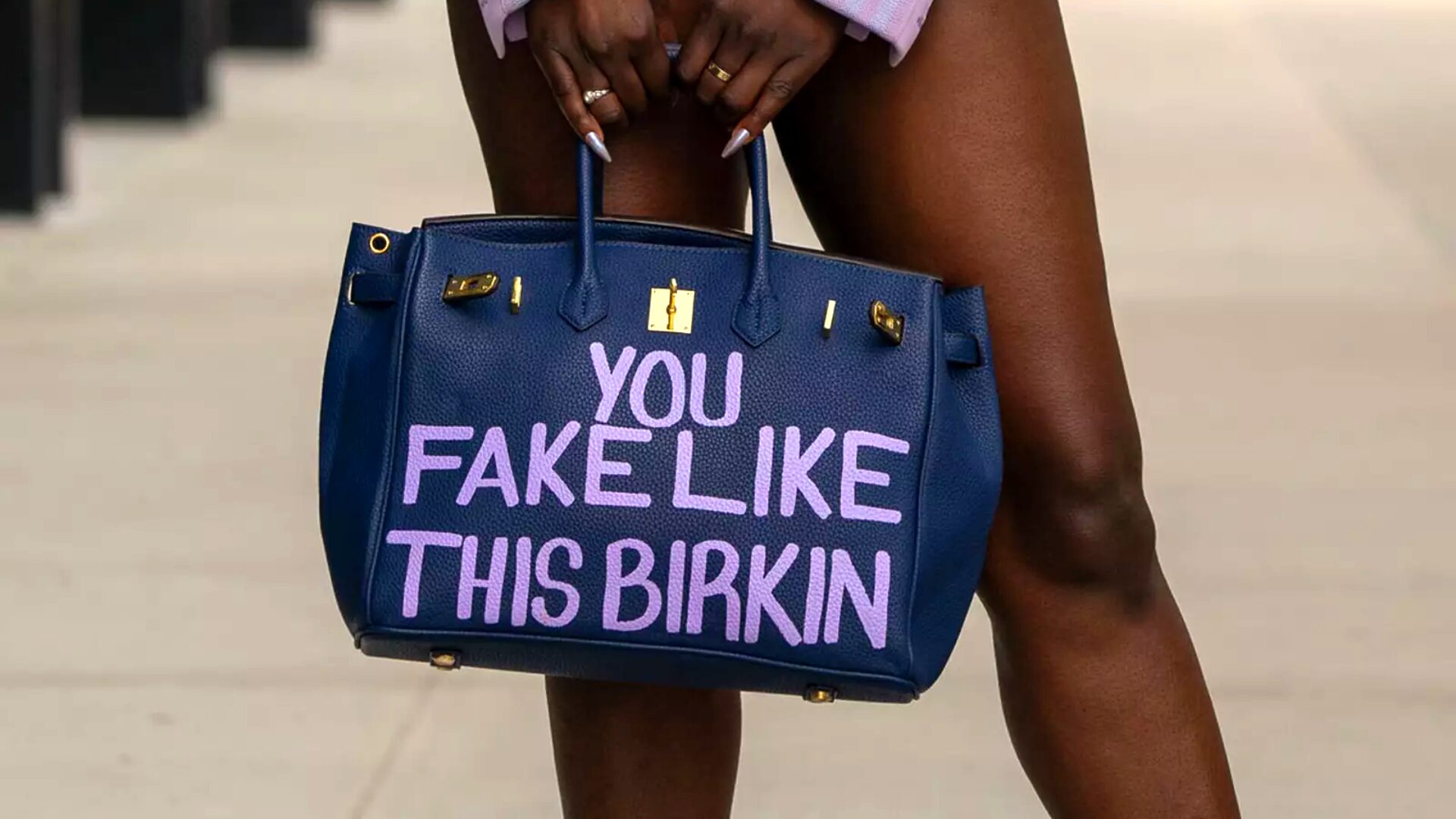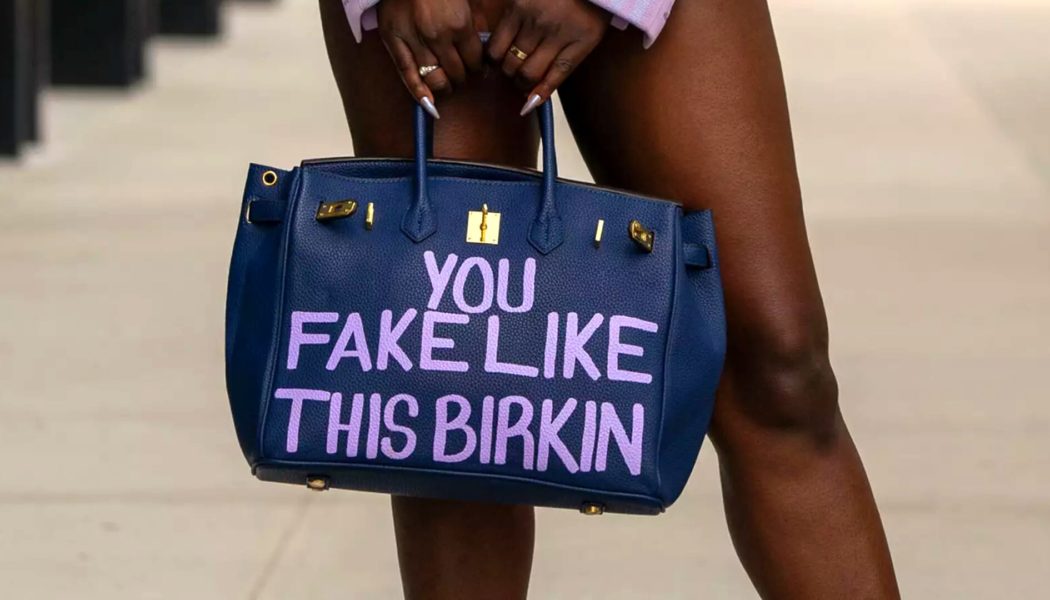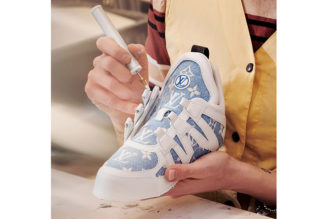
Several reports have indicated that Gen Z is not opposed to buying counterfeit luxury fashion items despite being branded as the most eco-conscious generation yet.
While we know Gen Z is by far the most clued up and vocal about environmental issues, mounting reports suggest that this age group’s habits don’t always reflect their concerns – especially when it comes to obtaining ‘high’ fashion.
The counterfeit luxury fashion industry has been growing in popularity. It is now worth more than ever before, with estimates of its value reaching $3 trillion in 2022. For context, this figure is three times higher than it was a decade ago.
Of course, the industry has had a huge boost from social media, which has groomed society into a relentless cycle of overconsumption. This is especially true when it comes to finding outlets selling clothing that is financially affordable and on-trend, but unethically manufactured.
This is made worse by fast fashion ads woven into our social timelines, fashion influencers who push a new trend almost weekly, and on TikTok – the most used app amongst Gen Z – where the #fashiondupe hashtag has amassed 16.8 million views and counting.
Still, the data begs a real question. Why does Gen Z – whose overarching identity is shaped by values such as eco-consciousness, sustainability, and authenticity – appear to be supporting an industry that embodies the polar opposite?
Let’s take a look.
Taking a look at the data
Last summer, a report called The Fashion Law was published by the European Union Intellectual Property Office.
It surveyed people between the ages of 15–24 and found that 52 percent had admitted to purchasing at least one counterfeit item in the last 12 months. It also found that 37 percent of participants had done so intentionally.
Looking across the pond, the results aren’t much different.
The Business of Fashion released its Gen Z and Fashion in the Age of Realism report in October 2022. It found that a majority of US Gen Z consumers between the ages of 13–25 believe it is acceptable for people to buy counterfeit items.
Its findings also revealed that more than one-third of respondents would be willing to wear dupe items over purchasing from luxury brands. We’ve already pointed to why this is happening, but why is it a bad thing?
Rather than highlight the profit lost by luxury brands due to counterfeit items, we should focus on where high-fashion dupes are coming from. We should also question if they are harming human health and the planet which, of course, they are.
Why is buying cheap, counterfeit fashion a problem?
Luxury dupes almost always rely on low-quality materials in order to keep their price point low.
This means weaving together high-fashion lookalikes from fabrics comprised primarily of plastic-based materials such as polyester, acrylic, and nylon. Accessories such as wallets, purses, and shoes are typically made from 100 per cent plastic.
From the moment they are manufactured, these materials will shed microplastics. These fibres enter the natural environment, create dust in our homes, and even leak harmful chemicals into our bodies as we wear them.
In fact, early scientific research has already pointed to microplastics as causing immune system dysfunction and a rise in chronic diseases, cardiovascular disease, cancer, and even infertility.
This is because the toxins in these fossil-fuel-derived, plastic-based fabrics are absorbed through the pores of the skin and stored in our fat cells. And since women biologically have a higher body fat percentage, these health issues are prone to disproportionately affect them.
While this is all very concerning, it’s only one piece of a gargantuan issue.
At Thred, we’ve already covered the many ways the fast fashion industry is destroying the livelihoods of its employees, polluting global water systems, and causing mountains of landfills to grow to immeasurable sizes around the world.
So when virtually all of Gen Z list the environment as one of their primary daily concerns – what gives?
Will these habits change?
Despite the fact that authentic luxury items often dent the wallet in the short term, they are an investment that is designed to last.
Clothing items can often be worn for many years without losing their shape or quality. Purses and wallets can last decades and are often passed down through generations.
On top of this, most high-end fashion houses provide a lifetime guarantee. They offer free repair services in the unlikely event that seams come loose or zippers/ buckles break.
The truth is, Gen Z knows this. But data suggests that most members of Gen Z don’t have enough economic income to invest in authentic luxury items, at least for now.
With fashion-fashion companies targeting their ads towards young people and the cost-of-living crisis raging like never before, it’s hard to deny this could be the reality.
And yet, there seems to be a light at the end of the tunnel. Both reports indicate that the average number of fashion purchases levels off as we reach the age of 30. After the age of 44, apparel purchases drop off significantly.
Perhaps with a large portion of Gen Z reaching the age of steady employment (and a ban on TikTok being considered in many major countries), we’ll see a move away from the reign of fast fashion companies and their negative impacts.
At least we can hope so!









